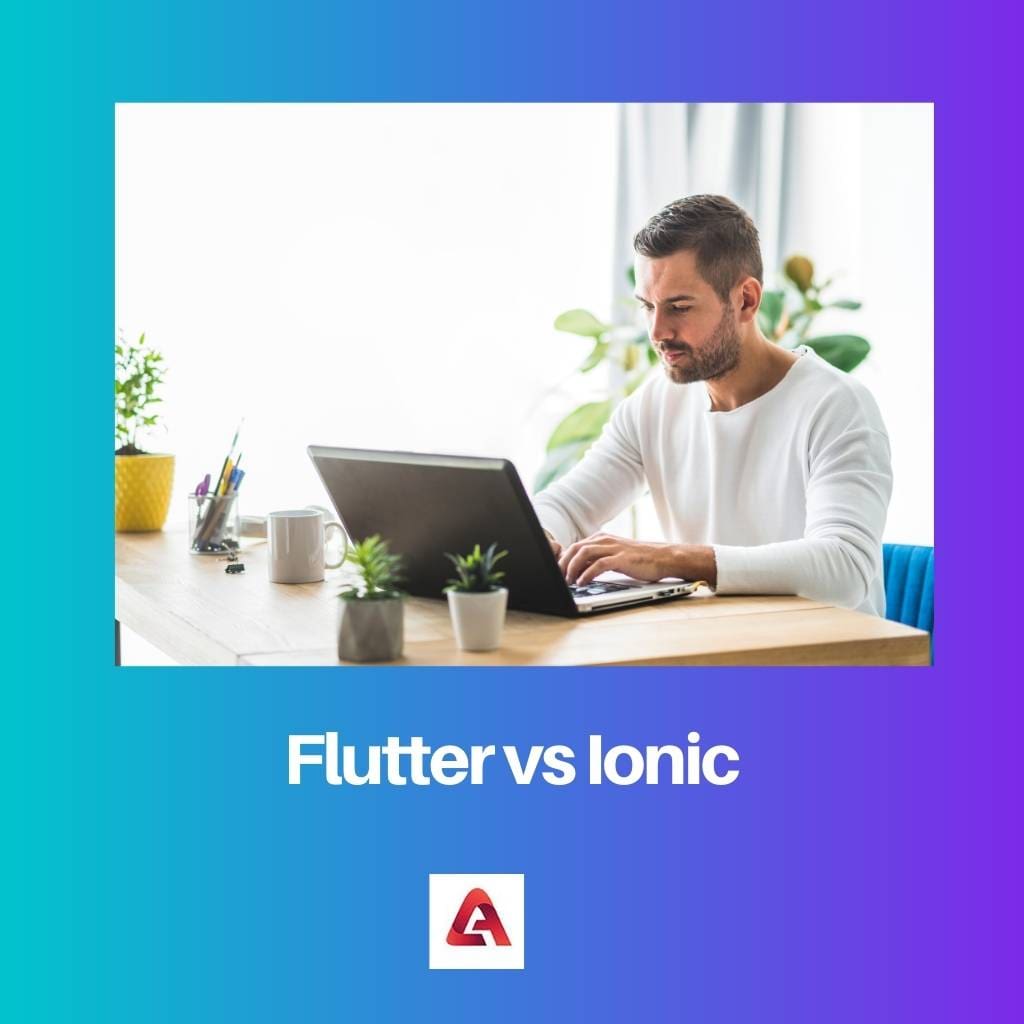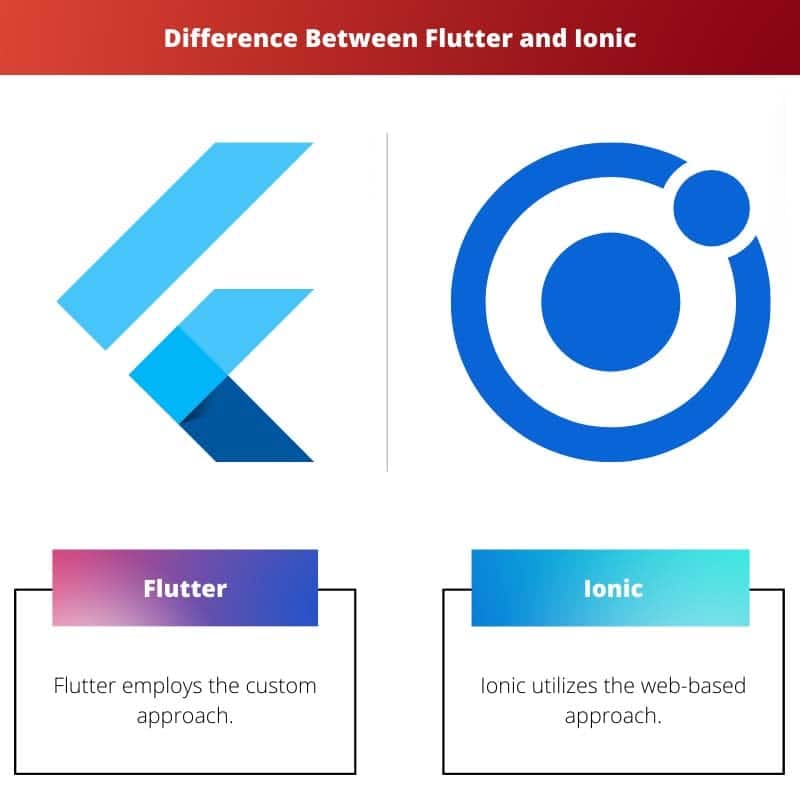Businesses these days look for a massive customer base. Mobile and desktop applications play a vital role in catering to their customers’ needs too. Making an application that is compatible with all the platforms is preferred.
While there are many frameworks available for making cross-platform Apps, there are a few that shares a common vision but differ significantly in their philosophy. Two such technologies are Flutter and Ionic.
Key Takeaways
- Flutter is a UI toolkit by Google that uses the Dart programming language, while Ionic is a hybrid mobile app development framework using web technologies like HTML, CSS, and JavaScript.
- Flutter provides a native-like performance and feels, while Ionic relies on web views for rendering, which can affect performance.
- Both frameworks support cross-platform development, but Flutter is known for faster development time and better performance.
Flutter vs Ionic
Flutter is an open-source, cross-platform mobile development SDK used to build natively compiled, multi-platform applications from a single codebase. Ionic is a cross-platform App development platform that offers better support by providing critical support from the community to developers looking for help.

Flutter is an application development technology that uses Dart as its core language. The language was developed way back in 2011, and you can hardly find anyone using the language apart from Flutter enthusiasts.
The best part of Flutter is its library of User Interface widgets which does not rely on any native UI elements.
Ionic, on the other hand, is used to build applications using the languages available on the web. Namely, HTML, CSS and JavaScript. If you have an idea to use these languages to build a simple app, then it shall be comfortable using Ionic.
You can, as such, deploy a cross-platform application with a single codebase.
Comparison Table
| Parameters of Comparison | Flutter | Ionic |
|---|---|---|
| Approach | Flutter employs the custom approach. | Ionic utilizes the web-based approach. |
| Languages Used | Dart | Ionic uses HTML, CSS, and JavaScript. |
| Dependency | Flutter has its ecosystem and does not depend on any native UI elements. | Ionic is dependent on web-based languages to build applications. |
| Animation Performance | Flutter is easy to code, and performance is far better than Ionic. | Ionic requires heavy codes that may derail the performance. |
| Code Bundle Size | Large | Small |
What is Flutter?
Flutter is an application-building technology that has its ecosystem. That means to say it has a library of UI elements, and you can choose from them without writing any code.
The language used in Flutter is Dart. The mobile applications developed by Flutter access native device features, just like ReactNative.
There are ready-made packages available in Flutter. However, some developers also write custom code for specific application requirements. Flutter is highly portable.
That means you can create the application using a code base, and it can be compatible with mobile phones and desktops too. However, one must learn Dart to work on this technology.
Flutter has a Dart Compiler. It converts the code to JavaScript, which will render in the browser. The performance of the application largely depends on the code size. Most of the widgets are inbuilt, so to make complex UI features, you relatively have very little code.
However, the code bundle size for web-based applications is huge compared to most of the technologies in this genre.
The usage of Dart as a language and custom rendering engine makes the platform stand alone. You must decide as to which device you are planning to host the application.
As such, Flutter is too good for mobile devices, while desktop application requires a lot of back-end work. The code conversion takes a long time to render as well.

What is Ionic?
Ionic is a complete web-based platform that uses open-source software for creating web-based as well as mobile applications. The technology is more reliable for web-based platforms. Ionic applications are built using HTML, CSS, and JAVAScript as the languages.
You can deploy the applications on various platforms using a single codebase. Incidentally, the code bundle size is small and hence effective and fast. As the application runs on mobile, Ionic uses Cordova or Capacitor, which offers access to any native APIs.
Interestingly, the Mobile User Interface runs in the web view, and it is not visible to the viewer at all.
The UI components are picked from the web, unlike Flutter. This makes the application run in any type of web browser. Moreover, the application is compatible with any JavaScript Framework.
Ionic also has 100 UI components in the library that can be customized using CSS according to your requirements. Alternatively, you can build your library of UI components using Stencil. Ionic updates the UI design depending on the platform and the application functions.
The knowledge base required to work on Ionic makes this technology the most sought. The updated software knowledge is available to most of the developers, and the requirement to learn any new language is curbed.

Main Differences Between Flutter and Ionic
- The main difference between Flutter and Ionic lies in the skill required to work on the technology. Flutter uses Dart as its language, while Ionic uses all web base languages, which is easier for the developers.
- Flutter has a platform that helps you create the app. That means to say it has custom-built libraries for UI elements. On the other hand, Ionic uses all the web-based UI components.
- The code bundle size of Flutter is large when compared to the Ionic codebase.
- Flutter is preferred to make mobile applications, while Ionic is always the best choice for Desktop applications.
- Flutter’s code portability is less advanced, while Ionic is versatile in both mobile and desktop applications.



